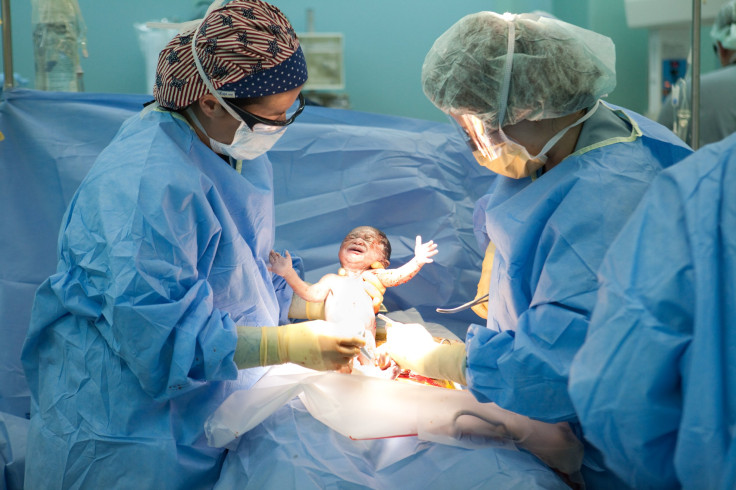C-Section Has Improved With Modern Medicine, But Women And Children Still Face Risks: 6 Things To Know

Cesarean sections have been around for a long time. According to the U.S. National Library of Medicine (NLM), ancient Greek mythology says Apollo removed Asclepius, the Greek God of medicine, from his mother’s abdomen. And one of the earliest illustrations of C-section is from 1506, in which the live infant being removed is believed to be Julius Caesar. This could account for the procedure’s name, but experts can’t really say for sure.
In these ancient times, C-sections were only performed when the mother was dead or dying, the procedure being an attempt to save the child — Ancient Roman law actually decreed all women in this situation be “cut open.” C-sections started to evolve into the procedure we’re familiar with today, which is to say much safer, after dentist William T.G. Morton medically applied anesthesia in order to remove a tumor, the NLM reported.
That’s not to say anesthesia immediately made C-sections safer. The NLM found surgical techniques were still underdeveloped, often unclean, and led to an “appallingly high maternal mortality rate;” most post-operative deaths were caused by fatal infections of septicemia and peritonitis, inflammation of the abdomen’s lining. It's lessened, but C-sections are still associated with high mortality rates.
Even so, more women than ever are electing the procedure. Consumer Reports found that in the U.S., C-sections have gone up 500 percent since 1970 and continue to rise (though trends vary across hospitals). In 2012, the World Health Organization (WHO) did report these high rates were leveling off, but there's still concern for both women and their newborns. Click "view slideshow" to see what we've learned in the past five years.




























